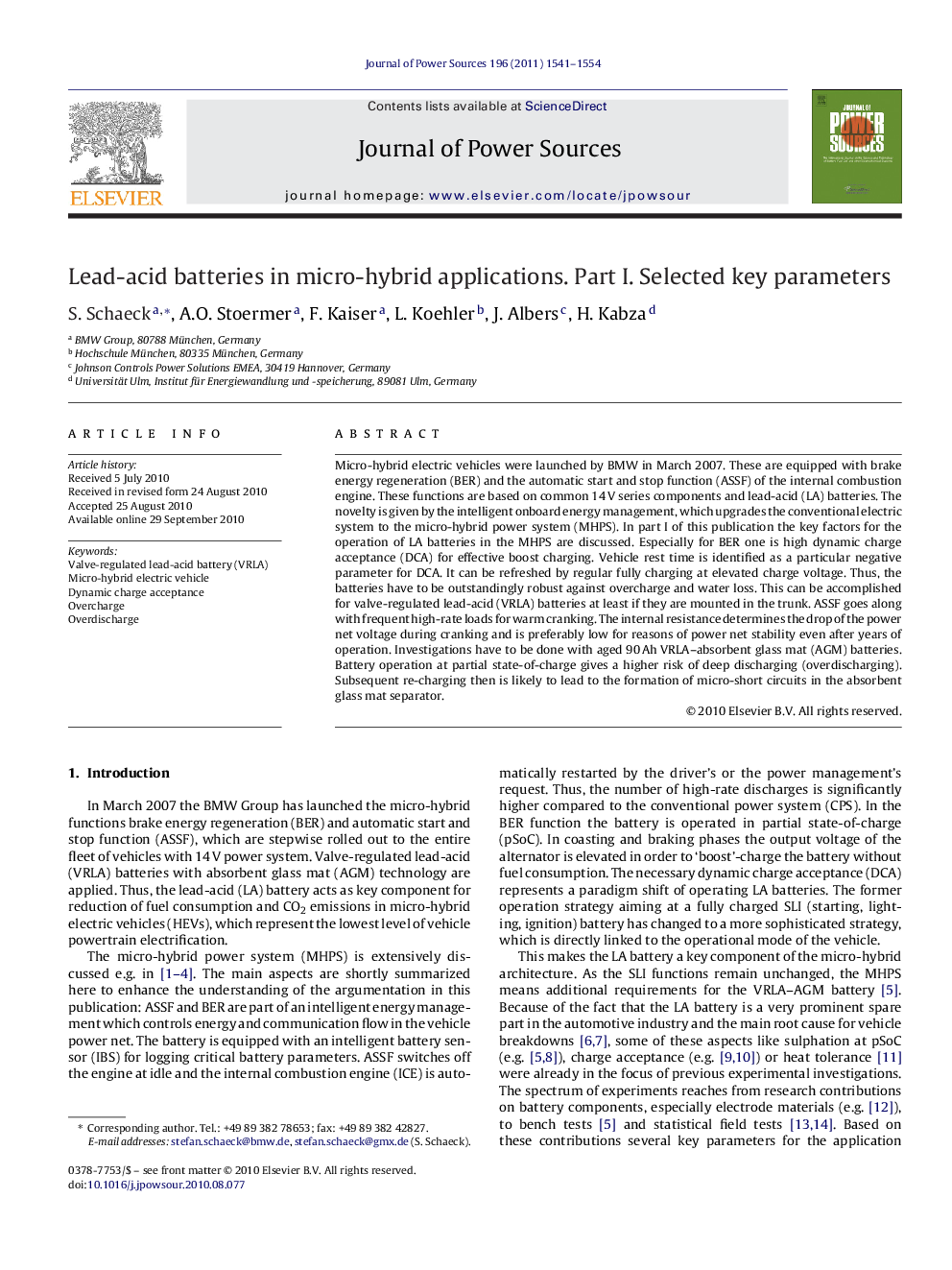| کد مقاله | کد نشریه | سال انتشار | مقاله انگلیسی | نسخه تمام متن |
|---|---|---|---|---|
| 1289661 | 973304 | 2011 | 14 صفحه PDF | دانلود رایگان |

Micro-hybrid electric vehicles were launched by BMW in March 2007. These are equipped with brake energy regeneration (BER) and the automatic start and stop function (ASSF) of the internal combustion engine. These functions are based on common 14 V series components and lead-acid (LA) batteries. The novelty is given by the intelligent onboard energy management, which upgrades the conventional electric system to the micro-hybrid power system (MHPS). In part I of this publication the key factors for the operation of LA batteries in the MHPS are discussed. Especially for BER one is high dynamic charge acceptance (DCA) for effective boost charging. Vehicle rest time is identified as a particular negative parameter for DCA. It can be refreshed by regular fully charging at elevated charge voltage. Thus, the batteries have to be outstandingly robust against overcharge and water loss. This can be accomplished for valve-regulated lead-acid (VRLA) batteries at least if they are mounted in the trunk. ASSF goes along with frequent high-rate loads for warm cranking. The internal resistance determines the drop of the power net voltage during cranking and is preferably low for reasons of power net stability even after years of operation. Investigations have to be done with aged 90 Ah VRLA–absorbent glass mat (AGM) batteries. Battery operation at partial state-of-charge gives a higher risk of deep discharging (overdischarging). Subsequent re-charging then is likely to lead to the formation of micro-short circuits in the absorbent glass mat separator.
Journal: Journal of Power Sources - Volume 196, Issue 3, 1 February 2011, Pages 1541–1554